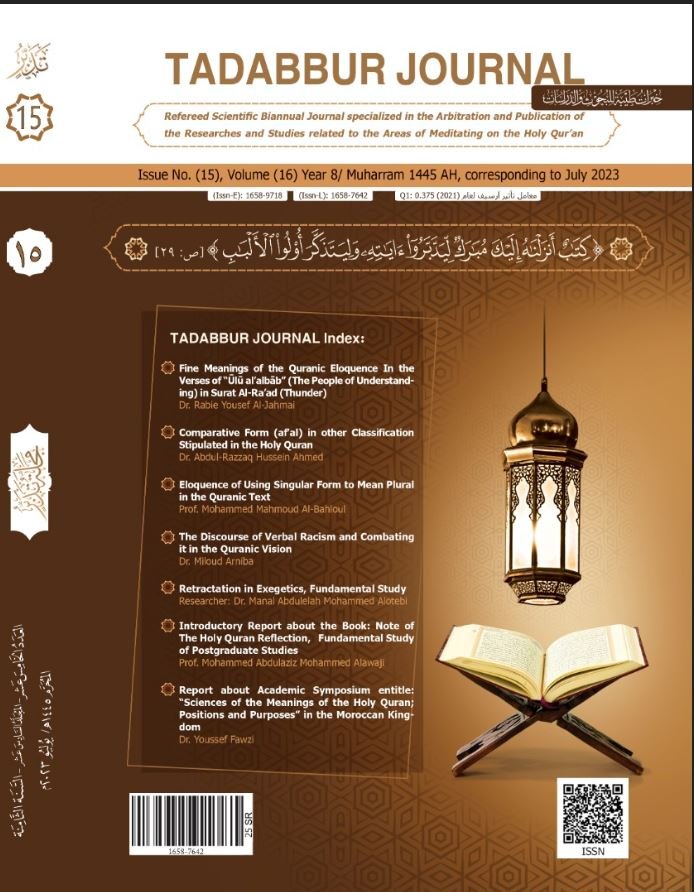research Comparative Form (afʻal) in other Classification Stipulated in the Holy Quran
Main Article Content
Abstract
Comparative Form (afʻal) in other Classification Stipulated in the Holy Quran
Dr. Abdul-Razzaq Hussein Ahmed
Associate Professor of Quran Exegetics
Imam Mohammed Bin Saud Islamic University
Djibouti Branch
Abstract
This paper studies a Qur’anic linguistic style, namely “Comparative Form (afʻal) in other Classification.”
The rules adopted by the linguists and interpreters of the Holy Quran stipulate that comparative form (afʻal) is used to compare between two things common in one adjective while one of them is more than the other. However, this form comes in the Holy Quran, Prophet’s hadiths, and Arabian poetry not to express the comparison but to express other meanings stated by the context.
Using the comparative form in these other meanings is one of the Arabic language fine secrets and an aspect of its semantics.
The research includes an introduction and two chapters as follows:
Chapter one: Brief introductions to the most significant issues of comparative form (afʻal).
Chapter two: an applied aspect of using comparative form (afʻal) in other meanings based on the Quranic positions.
The research revealed several findings including:
- Studying the rhetoric styles in the Holy Quran leads to founding out its secrets, helps contemplation, and then acting in it.
- The comparison concept is not achieved without two parties common in an adjective while one of them is more than the other.
- The grammarians and interpreters of the Holy Quran disagreed about comparative form (afʻal) does not express the comparison on three opinions: absolute prevention, definite allowance, and permit based on hearing without measurement.
- The Comparative form (afʻal) may exceed its original semantics to other ones including: adjectival participle, gerund, objective, superlative, exaggeration, transcendence and distance, resemblance, absolute preference, and compulsory preference.
Keywords: Form, Comparison, afʻal, the Holy Quran, Eloquence, Contemplation, Styles, Arabic Language
Downloads
Article Details
Conference Proceedings Volume
Section

This work is licensed under a Creative Commons Attribution-NonCommercial 4.0 International License.
Indicating to the intellectual property, copyrights, and open access right:
According to the Budapest Initiative 2002; tadabbur Journal, which is issued by Khibrat Taibah For Research and Studies in Medina, provides free open access to its publications, and applies the Creative Commons license:
Attribution- Non-Commercial 4.0 International (CC BY-NC 4.0) for the works it publishes from peer-reviewed scientific research and reports, which are freely available on the Internet, and which allows any user to read, download, copy, and distribute (Convert), print, search, or create links to the full texts of the journal’s research and publications, and analyze them in an automatic manner for discovering them, sending them as software data, or using them for any other legal purpose, without financial, legal, or other technical barriers beyond those related to Internet access.
It also highlight that the only barrier to reproduction and distribution, and the only role of copyright in this field, is the necessity of granting the authors of the journal’s research and reports and the publisher the journal; Control over their works, and the right to official recognition and reference citations.





